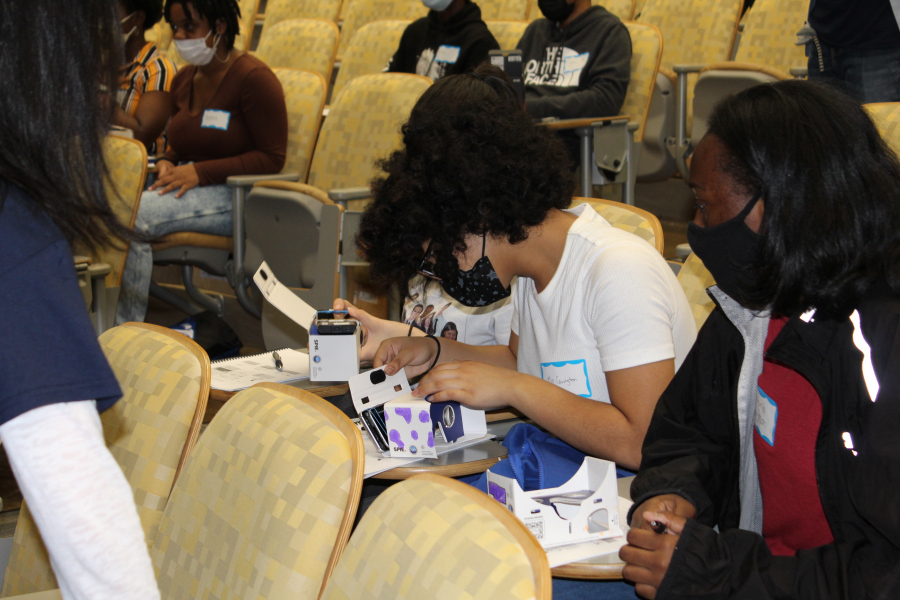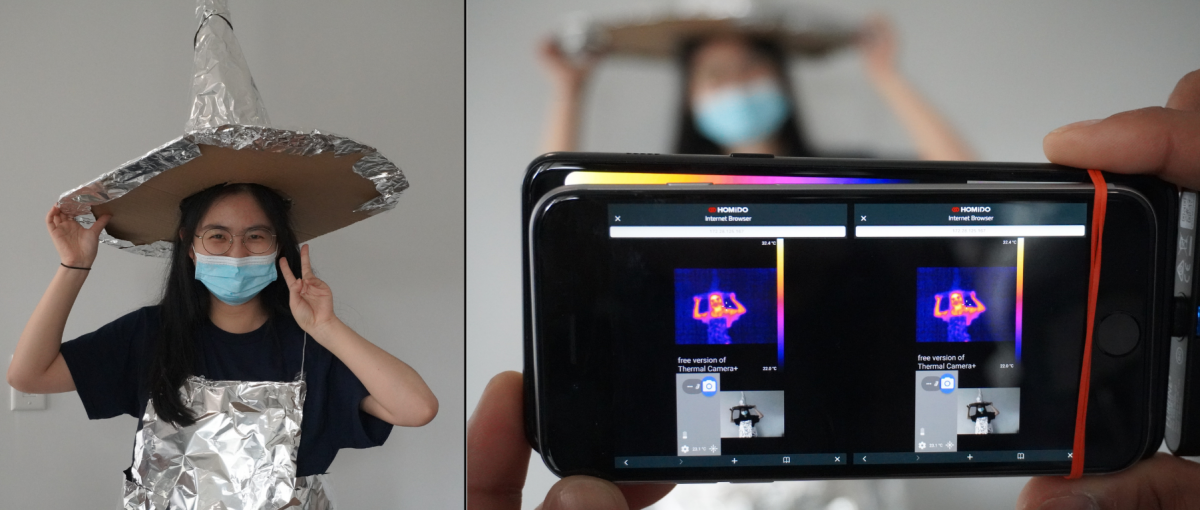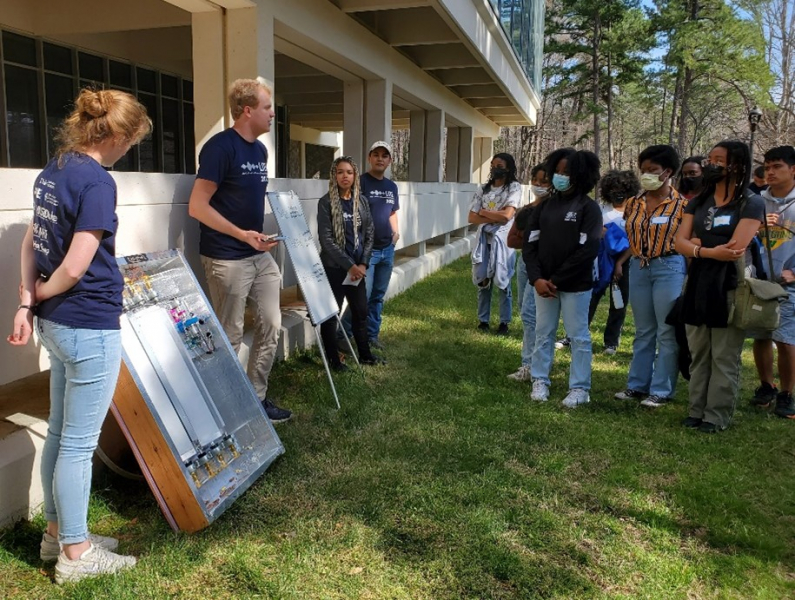K-12 Outreach: Let There Be LITE
Elizabeth Witherspoon
The Light, Infrared and Thermal Energy workshop by Po-Chun Hsu’s lab group engaged local high school students in optics, photonics and materials science

 Students from the North Carolina School of Science and Mathematics (NCSSM) in Duke’s hometown of Durham recently got to see firsthand how different materials emit different amounts of infrared light (IR), which is ordinarily invisible to the naked eye. In the process, they also got glimpses of the Duke campus labs and materials science facilities—so they could envision themselves as future engineers.
Students from the North Carolina School of Science and Mathematics (NCSSM) in Duke’s hometown of Durham recently got to see firsthand how different materials emit different amounts of infrared light (IR), which is ordinarily invisible to the naked eye. In the process, they also got glimpses of the Duke campus labs and materials science facilities—so they could envision themselves as future engineers.
Po-Chun Hsu, assistant professor of mechanical engineering and materials science at Duke, and members of his lab group created and hosted a one-day outreach event called LITE: Light, Infrared and Thermal Energy.
“Our goal was to educate and inspire higher educational career paths in the fields of optics and materials science for sustainable energy among ninth- and tenth-graders,” Hsu said.
The idea of having a workshop dedicated to light and thermal radiation originated around five years ago when Hsu was a PhD student, he said. The field to control light and heat for sustainable energy applications involves a tremendous amount of cross-disciplinary work and he started noticing some gaps across different fields. You might say this event was about shedding light on the importance of collaboration across fields for students who seem destined for careers in science, technology, engineering or mathematics (STEM) by virtue of their enrollment in this rigorous STEM high school.

Throughout the day, they used their goggles to view different objects in IR, including an aluminum suit worn by Hsu Lab member Keyu Wang that reflects IR and Leslie cubes, which have each side coated with a different material, such as matte black, matte silver, shiny silver and bronze. Each of these materials emits different levels of IR, explained Genesis Higueros, a PhD candidate in the Hsu Lab who organized and led much of the workshop and even designed the logo printed on their t-shirts.
The students also toured Duke’s Shared Materials Instrumentation Facility (SMiF) and the Hsu Lab before watching an outdoor demonstration of a solar energy device presented by a Duke Engineering undergraduate senior capstone team.
“The experience was amazing,” said Gerri Cole, associate director of STEM Outreach at NCSSM, who accompanied the students. “I was asking the students about their experience, and a lot of them are inspired and want to join Duke in the future.”
Ethan Moreno, a ninth-grader, said using the Leslie cube was his favorite workshop activity.
Fellow ninth-grader Adrian Tejada said the scanning electron microscope was his favorite instrument on the SMiF tour for “seeing the small details of items from nature and those created in the lab.”
“It is nice to see what type of research they are doing and how they have different facilities to do so, especially the inert glove boxes for air-sensitive materials. Seeing actual temperature in the thermal camera was so cool as well,” said tenth-grader Victoria Thompson.


 The Hsu Lab gratefully acknowledged funding support from:
The Hsu Lab gratefully acknowledged funding support from:
- National Science Foundation, Award No. ECCS 2145933
- SPIE Education Outreach Grants Program
- Maclin Community Connection Grant, administered by the Pratt School of Engineering’s Diversity, Equity & Inclusion Committee
- Duke University Stores
Duke Engineering in Service to Society
